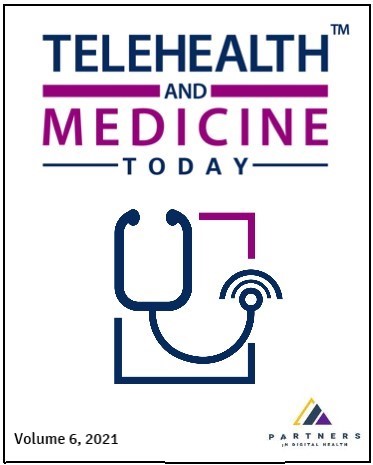Digitized Maternal Early Warning and Response Telehealth System
DOI:
https://doi.org/10.30953/tmt.v6.251Keywords:
Eclampsia, Maternal Health, Maternal Mortality, MEOWS, TelehealthAbstract
Introduction: In this article, we describe a pilot telehealth project for identifying women at risk of developing serious complications early and for instituting timely, appropriate, and up-to-date management even in situations with limited resources and skilled obstetric services. Maternal mortality remains unacceptably high, with less than two-thirds of the signatories to the 2015 Millennium Development Goals achieving the outlined 75% reduction in maternal mortality ratio (MMR) from 1990 to 2015. Looking forward to 2030, the Sustainable Development Goals (SDGs) lay out a target of reducing the MMR in every country to below 70 per 100,000 live births. This will require progress in low-and-middle-income countries at a rate much greater than that seen over the past 15 years. Given that 94% of the global maternal deaths occur in low- and-middle-income countries, a solution to meet the unique challenges of these countries will be necessary to achieve the SDG. The Women’s Obstetrical Neonatal Death and Reduction (WONDER) telehealth system described here offers a potential telehealth solution to reduce mortality and morbidity rates in resource-limited environments by early identification of risk indicators and initiation of care.
Materials and methods: The WONDER system consists of a cloud-based electronic health record with a Clinical Decision Support tool and a color-coded alert system. The Clinical Decision Support tool is based upon Maternal Early Warning Signs and provides real-time assistance to caregivers via relevant national treatment guidelines. This system uses inexpensive computing hardware, displays, and cell-phone technology. This system was tested in a 2-year pilot study in India. A total of 15,184 patients were monitored during labor and the postpartum period.
Results: Within limitations of the study, the incidence of in-hospital eclampsia was reduced by 91.7%, and in 95% of cases, timely treatment was started within an hour of identifying the abnormality in vital signs. Maternal mortality was reduced by 50.1% over local benchmark figures.
Conclusions: The WONDER system identified at-risk patients, directed skilled care to those patients at risk for complications, and helped to institute effective, timely treatment, demonstrating a potential solution for women in resource-limited locations.
Downloads
References
World Health Organization. Maternal mortality facts sheet. 2019 [cited 2020 Dec 16]. Available from: https://www.who.int/news-room/fact-sheets/detail/maternal-mortality
Stanton ME, Kwast BE, Shaver T, McCallon B, Koblinsky M. Beyond the safe motherhood initiative: Accelerated action urgently needed to end preventable maternal mortality. Glob Health Sci Pract. 2018;6(3):408–12. https://doi.org/10.9745/GHSP-D-18-00100
Alkema L, Chou D, Hogan D, et al. Global, regional, and national levels and trends in maternal mortality between 1990 and 2015, with scenario-based projections to 2030: A systematic analysis by the UN Maternal Mortality Estimation Inter-Agency Group. Lancet. 2015;387(10017):462–74. https://doi.org/10.1016/S0140-6736(15)00838-7
United Nations Department of Economic and Social Affairs, Statistics Divisions. The sustainable development goals report 2020. [cited 2020 Dec 16]. Available from: https://unstats.un.org/sdgs/report/2020/
United Nations. The millennium development goals report 2015. [cited 2020 Dec 2016]. Available from: https://www.un.org/millenniumgoals/2015_MDG_Report/pdf/MDG%202015%20rev%20(July%201).pdf
World Health Organization. India has achieved groundbreaking success in reducing maternal mortality. June 10, 2018 [cited 2020 Dec 16]. Available from: https://www.who.int/southeastasia/news/detail/10-06-2018-india-has-achieved-groundbreaking-success-in-reducing-maternal-mortality
Kanti V, Sharma P, Seth S. Maternal mortality trends in Uttar Pradesh, India. J South Asian Feder Obstet Gynecol. 2018;9(4):372–6. https://doi.org/10.5005/jp-journals-10006-1532
Mukherjee S, Mukherjee S, Sarkar R. A six year retrospective study of maternal mortality at a tertiary teaching institute in Uttarpradesh. Int J Med Sci Public Health. 2014;3(11):1407–9. https://doi.org/10.5455/ijmsph.2014.220820142
Barnes-Josiah D, Myntti C, Augustin A. The “three delays” as a framework for examining maternal mortality in Haiti. Soc Sci Med. 1998 Apr;46(8):981–93. https://doi.org/10.1016/s0277-9536(97)10018-1
Pacagnella RC, Cecatti JG, Osis MJ, Souza JP. The role of delays in severe maternal morbidity and mortality: Expanding the conceptual framework. Reprod Health Matters. 2012;20(39):155–63. https://doi.org/10.1016/S0968-8080(12)39601-8
Chavane LA, Bailey P, Loquiha O, et al. Maternal death and delays in accessing emergency obstetric care in Mozambique. BMC Pregnancy Childbirth. 2018;18:71. https://doi.org/10.1186/s12884-018-1699-z
Salam RA, Das JK, Ali A, Bhaumik S, Lassi ZS. Diagnosis and management of preeclampsia in community settings in low and middle-income countries. J Fam Med Prim Care. 2015;4(4):501–6. https://doi.org/10.4103/2249-4863.174265
Shennan AH, Redman C, Cooper C, Milne F. Are most maternal deaths from pre-eclampsia avoidable? Lancet. 2012;379(9827):1686–7. https://doi.org/10.1016/s0140-6736(11)60785-x
ACOG Committee on Practice Bulletins—Obstetrics. ACOG practice bulletin. Diagnosis and management of preeclampsia and eclampsia. Number 33, January 2002. Obstet Gynecol. 2002 Jan;99(1):159–67. https://doi.org/10.1016/s0029-7844(01)01747-1
Gupte S, Wagh G. Preeclampsia-eclampsia. J Obstet Gynaecol India. 2014 Feb;64(1):4–13. https://doi.org/10.1007/s13224-014-0502-y
Abalos E, Cuesta C, Grosso AL, Chou D, Say L. Global and regional estimates of preeclampsia and eclampsia: A systematic review. Eur J Obstet Gynecol Reprod Biol. 2013 Sep;170(1):1–7. https://doi.org/10.1016/j.ejogrb.2013.05.005
American College of Obstetricians and Gynecologists’ Committee on Practice Bulletins—Obstetrics. Gestational hypertension and preeclampsia: ACOG practice bulletin, Number 222. Obstet Gynecol. 2020 Jun;135(6):e237–60. https://doi.org/10.1097/AOG.0000000000003891
Nobis PN, Hajong A. Eclampsia in India through the decades. J Obstet Gynaecol India. 2016;66(1):172–6. https://doi.org/10.1007/s13224-015-0807-5
Vousden N, Lawley E, Seed PT, et al. Incidence of eclampsia and related complications across 10 low- and middle-resource geographical regions: Secondary analysis of a cluster randomised controlled trial. PLoS Med. 2019;16(3):e1002775. https://doi.org/10.1371/journal.pmed.1002775
Nour NM. An introduction to maternal mortality. Rev Obstet Gynecol. 2008;1(2):77–81.
Ministry of Health and Family Welfare (India). India HMIS standard report—Data itemwise monthly 2017–2018. New Delhi, India: Ministry of Health and Family Welfare (India). 2018.
Josephine SM. Tamil Nadu’s maternal mortality rate sees sharp six-point drop. The Hindu. July 2019. Available from: https://www.thehindu.com/news/national/tamil-nadu/states-mmr-sees-sharp-six-point-drop/article28529982.ece
ACOG Committee on Obstetric Practice. ACOG Committee Opinion. Emergent therapy for acute-onset, severe hypertension during pregnancy and the postpartum period. Number 767, February 2019. Available from: https://www.acog.org/clinical/clinical-guidance/committee-opinion/articles/2019/02/emergent-therapy-for-acute-onset-severe-hypertension-during-pregnancy-and-the-postpartum-period

Published
How to Cite
Issue
Section
License
Copyright (c) 2021 Narmadha Kuppuswami, Suresh Subramanian, Karenna Groff, Radha Rani Ravichandran

This work is licensed under a Creative Commons Attribution-NonCommercial 4.0 International License.
Authors retain copyright of their work, with first publication rights granted to Telehealth and Medicine Today (THMT).
THMT is published under a Creative Commons Attribution-NonCommercial 4.0 International License.
















